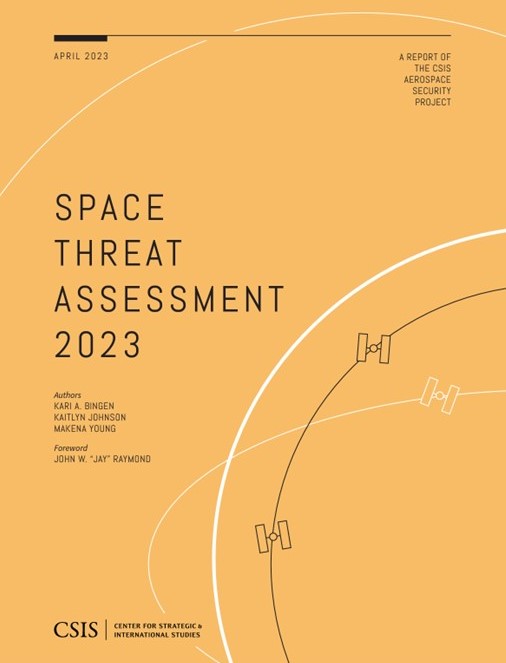What’s New: CSIS released their annual Space Threat Assessment yesterday. Lots of focus on Russia attacking Ukraine, of course. And the other usual players – China, Iran, North Korea, India. GPS is mentioned 37 times.
- New insight: Use of commercial space by Ukraine has blurred what was seen as a civil/military divide. Commercial assets are being overtly attacked now. – Our take is that national power involves everything, military and commercial. It was only a mater of time.
Why its important:
- Dominance in space is one of the U.S. biggest advantages on the global stage. Along with our adversaries trying to match our capabilities, our space assets are one of their highest priority targets.
- GPS is our most important space asset. Therefore it is the highest priority, most threatened target.
- We need to do everything we can to protect GPS.
- And to be able to continue operating if it is not available.
- Commercial (LEO) PNT companies will need to focus on physical and cyber security.
What to know: Report co-author Makena Young will discuss this report on the 3rd of May at the next PNT Advisory Board meeting. The meeting is open to the public. Attend in person at the Crowne Plaza, Annapolis, MD or virtually. More information will be made available here.

Space Threat Assessment 2023
INTRODUCTION
WELCOME TO THE SIXTH EDITION of Space Threat Assessment by the Aerospace Security Project at the Center for Strategic and International Studies (CSIS). This resource for policymakers and the public leverages open-source information to assess key developments in foreign counterspace weapons. Drawing on six years of collected data and analyses, this series describes trends in the development, testing, and use of counterspace weapons and enables readers to develop a deeper understanding of threats to U.S. national security interests in space.
The past year was dominated by the Russian invasion of Ukraine, where space capabilities, including commercial satellites, played a highly visible and compelling role in Ukraine’s resistance to the invasion. Communications and imagery satellites have been used to connect Ukrainian troops across the battlefield, track Russian military movements, and map humanitarian corridors. As space capabilities continue to demonstrate their utility, from peacetime to conflict, it should come as no surprise that adversaries seek to block their use. Thus, this year’s featured analysis provides an in-depth look at Russia’s battlefield employment of counterspace weapons.
Russia, China, Iran, and others continue to pursue a wide range of space and counterspace activities, enabled by national policies, prioritized resources, and investments in supporting infrastructure. As General B. Chance Saltzman, the chief of space operations of the U.S. Space Force, noted in February 2023, “We are seeing a whole mix of weapons being produced by our strategic competitors.”1 Not only are these counterspace weapons in development and testing, but some have progressed to production and fielding in operational units. Such weapons could create disastrous effects for an array of national security, civil, and commercial users, especially if destructive weapons are employed that create orbital debris and render large swaths of popular orbits unusable.
The impacts of counterspace weapons use are no longer limited to military users alone. Harm to commercial and international space assets will also reverberate across the expanding space economy. According to the Space Foundation, 90 countries operate in space.2 The value of the global space economy was $469 billion in 2021, with other analyses projecting it will increase to over $1.25 trillion in annual revenue by 2030.3 While over 5,400 satellites are in-orbit today, more than 24,500 satellites are anticipated to be launched in the next 10 years (2022–2031), over 70 percent of which will be commercial.
This iteration of the Space Threat Assessment provides a framework that describes different types of counterspace weapons and a highlight of the main countries being tracked—China, Russia, India, Iran, North Korea, and others. The country sections include an overview of military space organizations, launch and satellite capabilities, and a brief review of counterspace developments. In addition, the report identifies key counterspace events in 2022, analyzes them in more detail, and provides a more comprehensive list of all notable counterspace activities and developments over the past year (January 2022–February 2023). The conclusion includes an analysis of notable trends and expectations for the coming year.
For more detail on past counterspace weapons tests, including historical tests by the United States and the Soviet Union, please review the prior Space Threat Assessments (editions 2018–2022) or visit the project’s interactive timeline at 2 https://aerospace.csis.org/counterspace-timeline/.
TOTAL SATELLITES IN SPACE 5,465
TOTAL LAUNCHES IN 2022 182
TOTAL TRACKED ORBITAL DEBRIS 32,300


